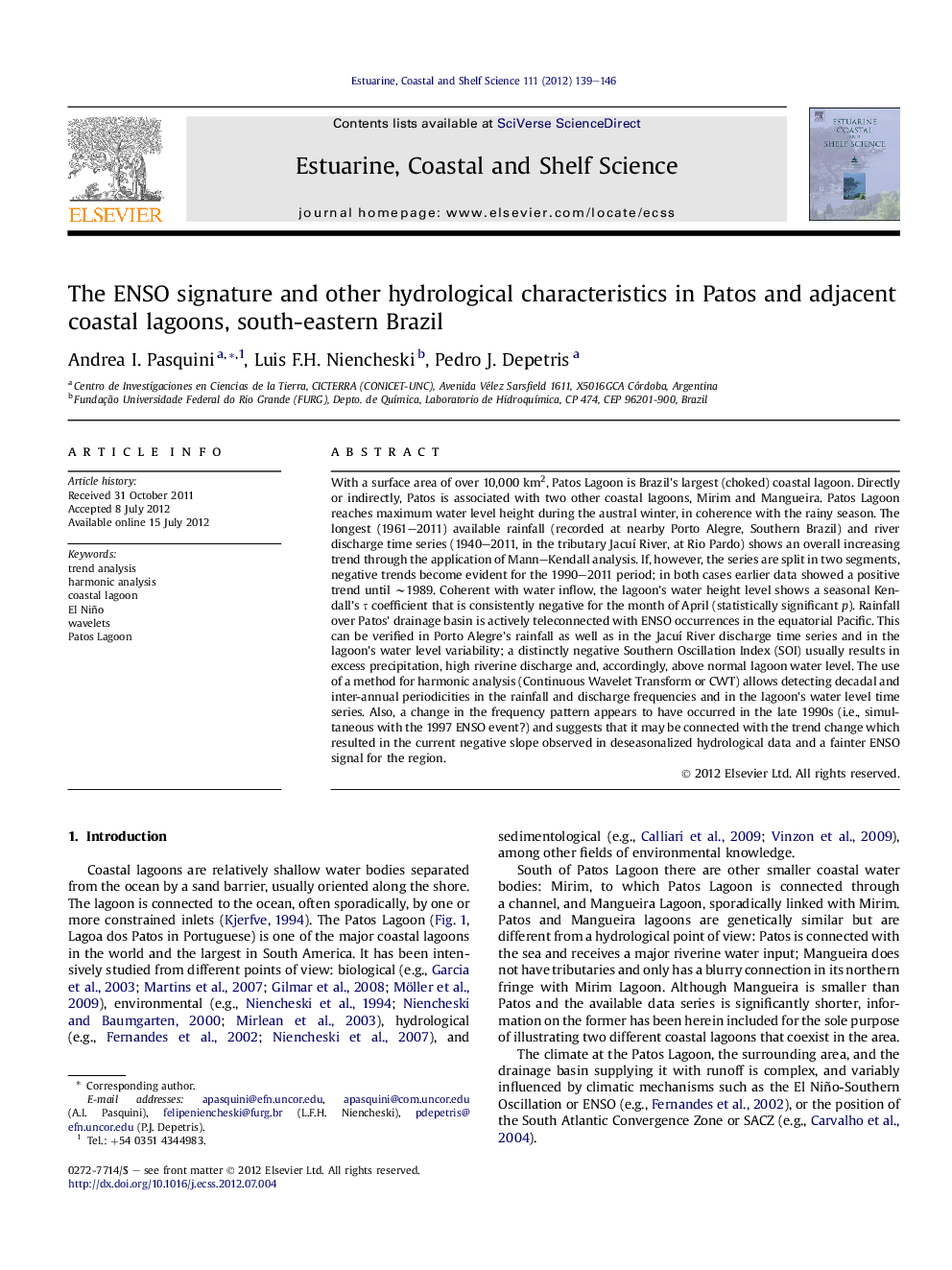| Article ID | Journal | Published Year | Pages | File Type |
|---|---|---|---|---|
| 6385152 | Estuarine, Coastal and Shelf Science | 2012 | 8 Pages |
Abstract
With a surface area of over 10,000 km2, Patos Lagoon is Brazil's largest (choked) coastal lagoon. Directly or indirectly, Patos is associated with two other coastal lagoons, Mirim and Mangueira. Patos Lagoon reaches maximum water level height during the austral winter, in coherence with the rainy season. The longest (1961-2011) available rainfall (recorded at nearby Porto Alegre, Southern Brazil) and river discharge time series (1940-2011, in the tributary Jacuà River, at Rio Pardo) shows an overall increasing trend through the application of Mann-Kendall analysis. If, however, the series are split in two segments, negative trends become evident for the 1990-2011 period; in both cases earlier data showed a positive trend until â¼1989. Coherent with water inflow, the lagoon's water height level shows a seasonal Kendall's Ï coefficient that is consistently negative for the month of April (statistically significant p). Rainfall over Patos' drainage basin is actively teleconnected with ENSO occurrences in the equatorial Pacific. This can be verified in Porto Alegre's rainfall as well as in the Jacuà River discharge time series and in the lagoon's water level variability; a distinctly negative Southern Oscillation Index (SOI) usually results in excess precipitation, high riverine discharge and, accordingly, above normal lagoon water level. The use of a method for harmonic analysis (Continuous Wavelet Transform or CWT) allows detecting decadal and inter-annual periodicities in the rainfall and discharge frequencies and in the lagoon's water level time series. Also, a change in the frequency pattern appears to have occurred in the late 1990s (i.e., simultaneous with the 1997 ENSO event?) and suggests that it may be connected with the trend change which resulted in the current negative slope observed in deseasonalized hydrological data and a fainter ENSO signal for the region.
Related Topics
Physical Sciences and Engineering
Earth and Planetary Sciences
Geology
Authors
Andrea I. Pasquini, Luis F.H. Niencheski, Pedro J. Depetris,
